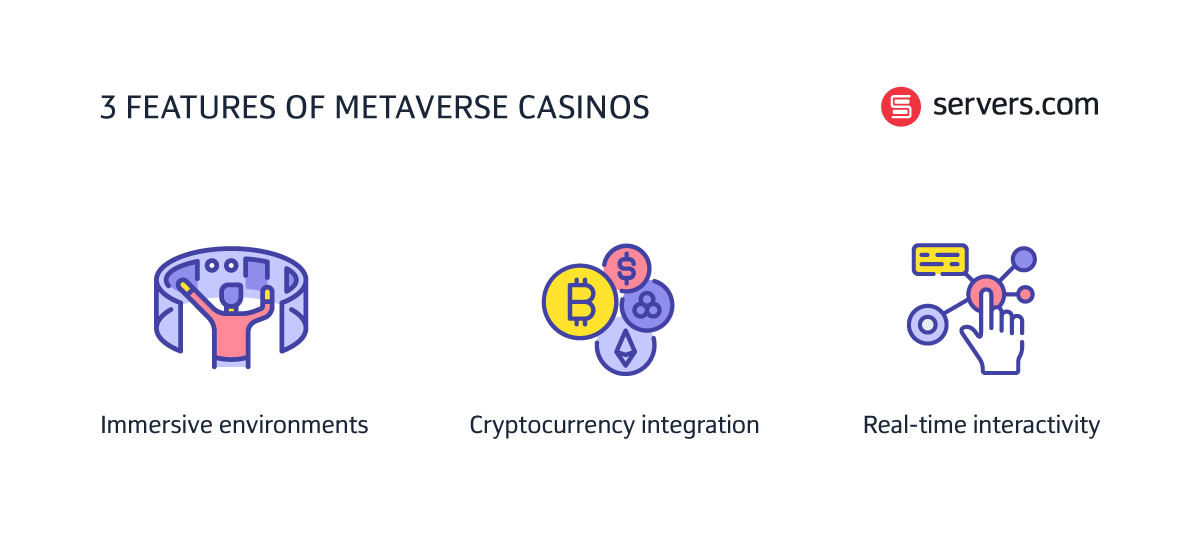

The term ‘metaverse’ was first coined in 1982. Not by a tech company but by an author. Neil Stevenson’s novel, Snow Crash, describes a virtual world where his characters escape their totalitarian reality. Fast forward to present day and talk of the metaverse surrounds us.
And whilst we might not be using it to Stevenson’s definition, his vision of a virtual reality is now firmly within our grasp. The possibilities are vast. Everything from virtual storefronts to conferences in the metaverse, to metaverse casinos – cue today’s topic of conversation.
It’s safe to say that iGaming is an industry making strides in this arena. In today’s blog, we explore how metaverse technology is evolving the gambling industry. And to help us out, we enlisted the expertise of Daniel Gunba, CEO of TRIION Gaming, the software development company providing solutions for live casinos in the Metaverse.
A metaverse casino is an augmented online casino experience. A virtual world where users create 3D avatars and connect with other players in virtual casino lobbies and game rooms.
Daniel explains how one of TRIION Gaming’s main solutions - body tracking technology powered by AI – achieves this:
“The whole idea is that, through any camera, we can track a human’s body and it will send the information from the tracking software to the metaverse and apply it to the 3D avatar.”
This bridges the gap between reality and the metaverse, as Daniel continues: “When the live dealers are dealing the cards or making the spins at the roulette tables, their avatars are doing exactly the same in the metaverse”.
But there’s a whole lot more to gambling in the metaverse than avatars alone. Metaverse casinos rally a whole range of additional features.

Features like:
Immersive environments
Metaverse betting is about more than just the games. It’s a fully immersive experience. Players can wander between different rooms and environments. From the casino lobby to the virtual bar, to the game rooms themselves. TRIION Gaming has even developed a ‘Metagarden’ (and virtual pets are very much on the cards).
On top of these virtual spaces, the potential for switching out themes is truly enormous. “Let’s say it’s Saint Patrick’s Day, studios can be customized in around one hour and you can have any animations you want”, Daniel tells us.
Cryptocurrency integration
Metaverse casinos typically allow users to deposit and withdraw using cryptocurrencies – either exclusively or in addition to fiat currencies. With players coming together from around the globe, a currency without borders makes sense.
“We’re currently working on integrations with OpenSea so people will be able to exchange and trade NFTs”, explains Daniel.
But despite the prevalence of crypto in the world of online gambling, it’s not necessarily the holy grail of payment methods. As we’ll discuss later, if crypto were to become ubiquitous for metaverse gambling, it could cause barriers to entry.
Real-time interactivity
A casino in the metaverse offers something that no other iGaming platform can – an experience akin to entering a brick-and-mortar casino. And part of that experience lies in the interactions with other patrons.
When gambling in the metaverse players feel like they’re getting the real casino experience. “They can chat, they can interact”, says Daniel. “It’s like communities for casinos in the metaverse”.
And operators need not worry about patrons of different metaverse casinos interacting, as Daniel explains:
“People from different casinos won’t be able to interact. Because otherwise the operators won’t be happy to join. We are not mixing their audiences”, adds Daniel.
Metaverse casinos are visually spectacular, entertaining, and novel. But beyond the initial ‘wow factor’, the impact that metaverse casinos could have on the gambling industry is much more widespread.

For operators, metaverse casino solution providers like TRIION Gaming make it quick and easy to set up a casino in the metaverse. “We’re developing the whole ecosystem” explains Daniel. “We’re bringing their live dealers into the metaverse with branded studios for them”.
And it’s not just the speed of studio development, it’s the cost too. “One table from a well-known provider is around 14,000 euro per month whereas an entire meta studio with three tables from TRIION Gaming is 13,000 euro a month. So, it’s much cheaper and saves a lot of money for casinos”, furthers Daniel.
There’s likely to be some resistance from old-guard online gambling enthusiasts towards gambling in the metaverse. “If we think about live table games, most of them [users] don’t think about the user interface or user experience. They see live dealers; they see the button to place your bets and that’s it. That’s all they want. They want to deposit and withdraw”, says Daniel.
But when one door closes, another door opens. And it’s likely that metaverse casinos will draw a new target audience to operators. “Now with VR and virtual environments we’re bringing a new audience looking for graphic solutions, for more entertainment,” says Daniel. “Not only gamblers but gamers who play different games and VR enthusiasts who develop on top”.
The iGaming industry is a tough nut to crack. “If we compare iGaming and any other industry, iGaming is very expensive. Everything you want to develop will cost you a lot”, explains Daniel. “In iGaming it’s always about huge investment… so a lot of talent might not find the funds.”
The metaverse has become synonymous with blockchain technology. “People usually think if it’s the metaverse then it’s developed on blockchain”, says Daniel. But he also tells us that this isn’t always the case.
TRIION Gaming, for example, is not developed on blockchain technology. Instead, payments are based on API connections and protocols between TRIION Gaming and its operators. And that means, it doesn’t matter what type of payment provider the operator is using (whether that be fiat or crypto).
The challenge is that blockchain technology and metaverse development have become deeply entwined in popular narratives. And because of growing uncertainty surrounding blockchain technologies it’s causing an air of distrust.
“When we speak to people from the industry sometimes, when we say ‘metaverse’ they’re all skeptical”, says Daniel. “The whole story with crypto, NFTs, and the markets so far is slowing down the process for metaverse development”.
“Casinos need to be very flexible and very accessible to users. If I’m not from the crypto industry, I don’t want to struggle with opening a wallet, buying crypto, depositing, and withdrawing it. It’s a headache”.
“At the end of the day, implementing crypto is not that hard”, furthers Daniel. “The casinos already have all the gateways, payment systems, everything. Now they need to understand: are their players going to use that? Most probably not yet”.
That’s not to say crypto integration should be abandoned altogether. But for metaverse casinos to enjoy mainstream success it’s important that they cater both to crypto and fiat users.
Metaverse casinos are bridging the gap between brick-and-mortar experiences and the virtual world. And that all comes down to technology. But that technology is still evolving, and fast. With new gadgets the likes of Apple’s Vision Pro continuing to emerge, the limits of virtual and augmented reality are yet to be realized.
And the road to adoption doesn’t come without its obstacles. iGaming is a tough industry for new developers and its audience is resistant to change. Throw the issue of metaverse regulation into the mix and you’ve got a complex ecosystem to navigate.
Time will tell whether a new swathe of users can fuel metaverse adoption to its ultimate potential. But according to Daniel the technology is moving in a clear direction:
“More experiences, less gadgets”.

Frances is proficient in taking complex information and turning it into engaging, digestible content that readers can enjoy. Whether it's a detailed report or a point-of-view piece, she loves using language to inform, entertain and provide value to readers.